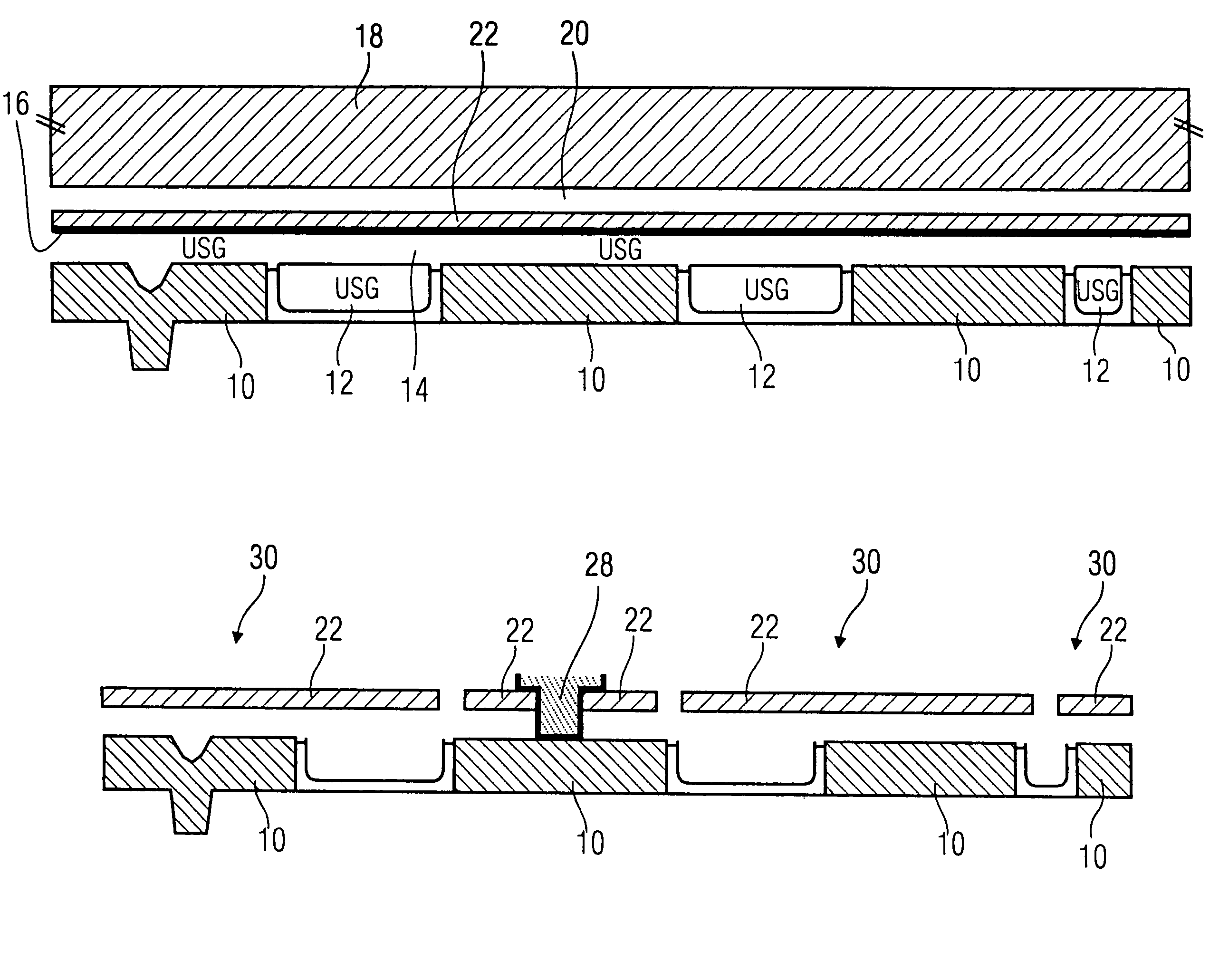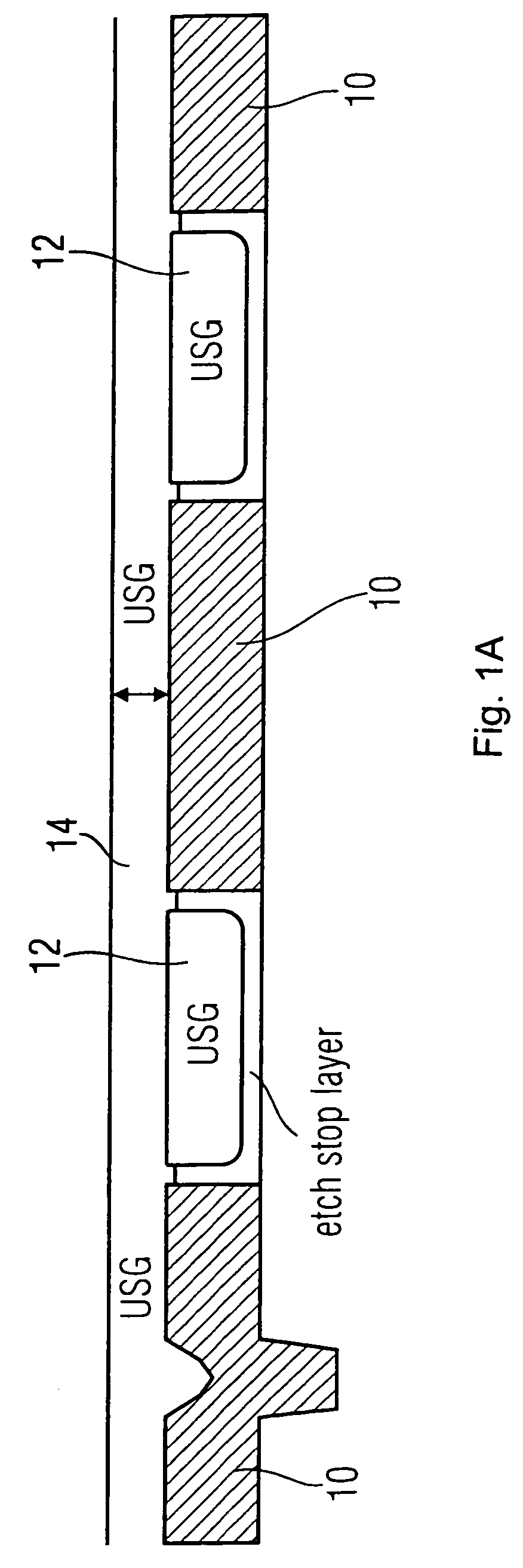The conventional and currently used SLM technology based on aluminum mirrors has certain limitations or constraints in this regard.
Although it is possible to obtain a fairly homogeneous thin film with minor stress gradients, the
alloy is subject to re-
crystallization and
stress relaxation upon heating and also sensitive to mismatch in contrast to the surrounding material, such as the spacer, during
thermal expansion.
Small changes in the
crystal structure lead to stress gradients in the thin film that easily warps of deforms a micromirror made out of such an
alloy.
Thereby, it is extremely difficult to obtain a good mirror planarity.
The statistical nature of the material itself as well as changes in the
process conditions inevitably lead to a limited reproducibility and also, to a certain amount, to a dependency on a statistical spread of the planarity, so that it is impossible to perform an exact control and reproducibility of the planarity.
Otherwise, the wafer-to-wafer and run-to-run reproducibility is limited.
Further, an aluminum
alloy is susceptible to plastic deformation upon bending.
In that way, the mirror planarity can change during use, which limits the
life span of such an SLM.
However, up to now, such thin
silicon membranes has not been successfully bonded to
CMOS wafer, and thus the prior art has clear limits.
With regard to “
flip chip” bonding of structured micromirrors (U.S. Pat. No. 6,587,613 B1, U.S. Pat. No. 6,800,210 B2 or U.S. Pat. No. 6,798,561 B2) it has to be said that this bonding requires a highly accurate alignment of the mirror structure with regard to the
control electronics and that further the conditions for alignment accuracy increase rapidly with reduction of the pixel size, thus the method has limited
scalability.
With regard to the layer transfer of
monocrystalline silicon by
eutectic bonding (WO 03 / 068669 A1) it has to be mentioned that this bonding of the wafers is based on forming an eutectic gold
silicon alloy, which requires temperatures in excess of 363° Celsius and thus means a risk for
increased stress in the transferred film.
A further
disadvantage is that an indiffusion of gold has to be performed, which can affect the mechanical performance of nearby elements, such as mirror hinges.
Additionally, locally limited stress can be built up and
crystal defects can occur at the bonded areas, which are sources for crack formation during
thinning down.
This is particularly a problem when very thin films, such as are required for spatial light modulators, have to be bonded.
While this method of
eutectic bonding has the
advantage of being able to produce electrical and mechanical connections between mirrors and
electronics directly without further
processing (i.e. no filling elements are used), there is a
disadvantage in that the area where bonding is performed is limited and in direct conflict to the requirement for compact post structures.
Further, it has to be mentioned about
eutectic bonding that it requires that a contact between post and film is achieved on all locations on the film, which is, however, very difficult, sincea) there are slight variations of the post heights, andb) the
mating wafers (i.e. the SOI wafer and the wafer providing the
control electronics) have variations in thickness.
Thereby, the difficulty is the strength of the wafers and the structures on the wafers, whereby bonding becomes sensitive to local height variations.
In relation to a layer transfer of a
monocrystalline silicon by
adhesive bonding (according to the above-mentioned disclosure of F. Niklaus, S. Haasl and G. Stemme) it has to be mentioned that this
adhesive bonding has a limited
bonding strength, caused by the dependence of the
adhesive capability of the used adhesive material.
As long as no specific precautions are taken, the gap between the bonded wafers will be non-uniform and structure-dependent.
Further, it has to be mentioned that there is a risk of
particle contamination prior to bonding caused by the lack of suitable bonding tools allowing cleaning immediately prior to bonding as a partial step of the
bonding process.
Further, the above-mentioned
patent application remains non-specific about how a thin film is to be deposited on the electronic substrate.
Additionally, no direct information is given on how this is to be performed particularly with a
monocrystalline silicon thin film.
The disclosure in the above-mentioned
patent application that
thinning down of part of the
silicon wafer can be performed (such as disclosed on page 3 and 7 of the mentioned
patent application), would cause problems when the goal is a 300 nm thick membrane, since the accuracy of such a process is very poor.
 Login to View More
Login to View More  Login to View More
Login to View More 


